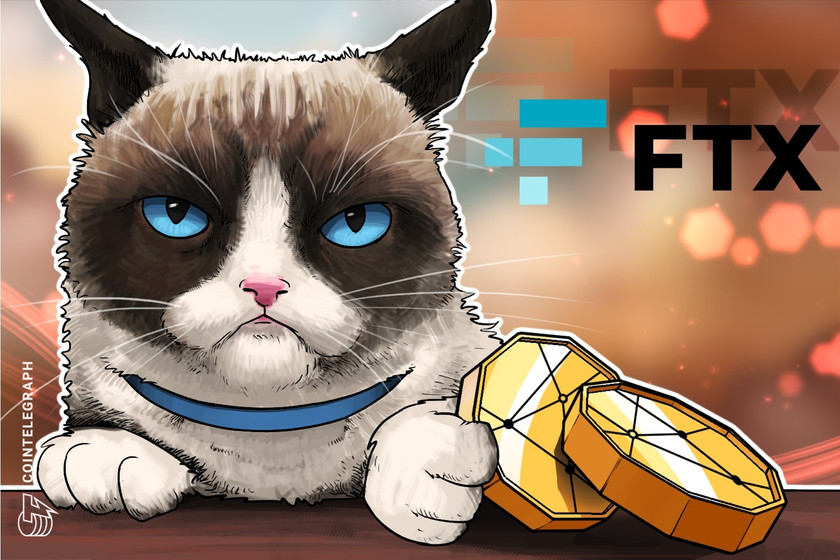The six phases to product-market fit in Web3
As the bear market of 2023 unfolds, the market is filled with tokens and projects on life support fighting to survive or retain value. Many of these projects, products and platforms differ from Web2 companies. They do not have focused teams to drive product-market fit (PMF). They use levers like incentives, tokens and a movement-centered approach to branding.
Web3 platforms can begin their product-market fit journey with the distribution of utility tokens via airdrops or bounties creating a community-operated workforce. Permissionless product innovation, leaderless movements (e.g., Bitcoin) and faceless branding are more nuanced than Web2 traditionalists would care to understand.
Six phases to PMF
There are six broad and overlapping phases to achieve product-market fit, with key outcomes being the desirability, viability and economic feasibility of the product. These six phases must be well-understood, executed, measured and incentivized correctly.
Progressive decentralization
This is a term coined by Andreessen Horowitz and it talks about three phases: product-market fit by drawing the right initial users even during the time the product is controlled by the founding team, incentivizing more users by turning them into a community and eventually turning operational control and decision making to the community.
This is the first stage of the PMF. Attract the right community and scale slowly to decentralize as you continue to bring in more of the right folks. This is the antithesis of the community built via ICOs where a bunch of speculators bought into a project and community that could be several degrees off a real fit. A compelling idea must be translated into a compelling vision and execution in the open market to have the right folks rallying behind it.
Utility establishment
Discovering and establishing utility takes time, experimentation and an iterative process. Early community members prototype use cases and dApps and engineer some utility into the tokens, driving initial growth. When platforms, products or protocols emerge from the early stages, foundational elements of utility must prove themselves (e.g., locking resources, capital and throughput into the token ecosystem). This is a critical step to make sure the PMF is underway.
These can be measured through various KPIs such as total value locked, developer activity, etc. The liquidity and reliability of the base platform are determined through some of these key metrics. Then, more users are attracted to the narrative, liquidity, reliability, growth and robustness of the base platform, establishing multiple utilities and ensuring a common goal to enhance it. The utility establishment phase also cements community participation — a critical step without which the token will not gain momentum.
Join the community where you can transform the future. Cointelegraph Innovation Circle brings blockchain technology leaders together to connect, collaborate and publish. Apply today
Utility momentum
Once the utility is established, it needs to be accelerated. For example, expanded uses cases such as collateralization, flash loans, burning, etc., through adding vectors of token programmability. Many protocols and platforms do not cross into this momentum phase of the PMF. Some have activated a variety of momentum vectors (e.g., DeFi, gaming, DAOs, etc.), attracting different types of developers who can add multifaceted programmability and utilities for adding momentum.
DeFi and dApp building has shown the ability to drive momentum in growing stablecoins, automated market makers, lending protocols, etc. A more composable infrastructure and platform layer must drive momentum. Raw protocols seldom get here and Ethereum is a notable exception.
Network effect alpha (Metcalfe’s Law)
Network effects are the moat of any platform or protocol; they strengthen and accelerate functionalities around the thesis and narratives. Network effects (Metcalfe’s Law) such as more users and more usage — and more usage results in more users requiring a lot of work. For users and usage to thrive, one needs additional tools such as exchanges, wallets, media and projects built on the base platform or protocol. This enriches the established token momentum and provides value for it.
Network effect beta (Reed’s Law)
A strong foundational narrative and functionality will create a thriving ecosystem to manifest Metcalfe’s Law, but if the ecosystem’s value is compelling, they spawn their own ecosystems — unfolding Reed’s Law. Once Reed’s Law has reached a critical mass, it is a formidable competitive strength and difficult for competing protocols to dislodge.
Ethereum produced the base Metcalfe’s Law but its ecosystem players like Polygon, Optimism, Arbitrum, etc., have spawned their own compelling ecosystems and created Reed’s Law. As these ecosystems scale further, we could see exponential value accrue to the base protocol. As more ecosystems lock themselves on the base platform, the beta network effect adds unshakable stickiness — the epitome of PMF in Web3.
The economic flywheel
Once the power of Metcalfe and Reed’s laws come together, it jumpstarts the economic flywheel which can create exponential growth for the platform or protocol. The more value created by community and ecosystems (dApp development, marketing, core development, etc.), the more the demand for platform usage, development and potentially even higher token prices.
All prior steps must be executed well, and the incentives of all participants must be aligned. Use cases like trading cards can go viral once a platform has achieved this level of PMF. They become powerful mechanisms to attract and retain capital within ecosystems while creating more venues to trade and expand user bases on top of people who can already play with each other. Launching use cases like these on platforms even at the Network Alpha or Network Beta phase of the PMF is left to chance. You’re likely to encounter much less risk when launching at the flywheel stage.
Concluding thoughts
The concept of Web3 product-market fit is crucial for the success of decentralized applications and platforms in the Web3 ecosystem. Achieving a strong product-market fit means understanding the needs and desires of the target market and delivering a product that satisfies those needs effectively. This requires an in-depth understanding of platforms, network effects, participants, their needs and the right incentives.
Nitin Kumar is a growth CEO and co-founder at zblocks. He is a recognized leader, author, former consulting partner and VC investor.
This article was published through Cointelegraph Innovation Circle, a vetted organization of senior executives and experts in the blockchain technology industry who are building the future through the power of connections, collaboration and thought leadership. Opinions expressed do not necessarily reflect those of Cointelegraph.
Learn more about Cointelegraph Innovation Circle and see if you qualify to join









